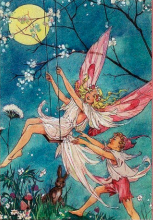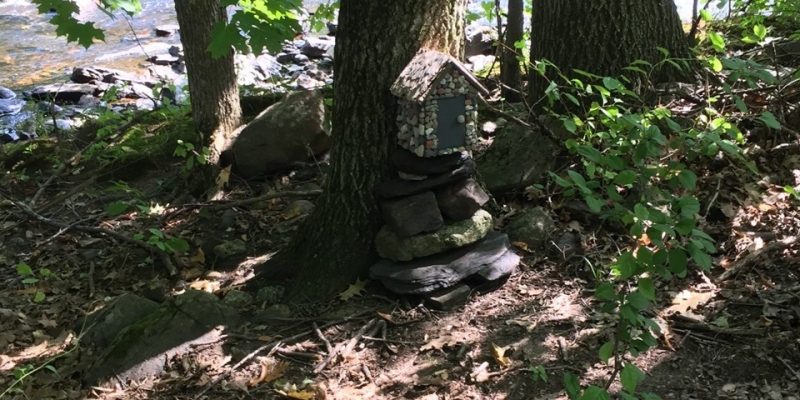
Ask A Fairy: Fall 2018 Answers
Thanks for visiting the fairies this fall and leaving your notes inside! You had some really great questions, and Thimble and Blossom had so much fun answering them. They are already down in the tropics where they'll be spending the winter, but are excited to come back next spring!
Keep reading below to find your question among the others, and let us know if you have any questions. Thanks!
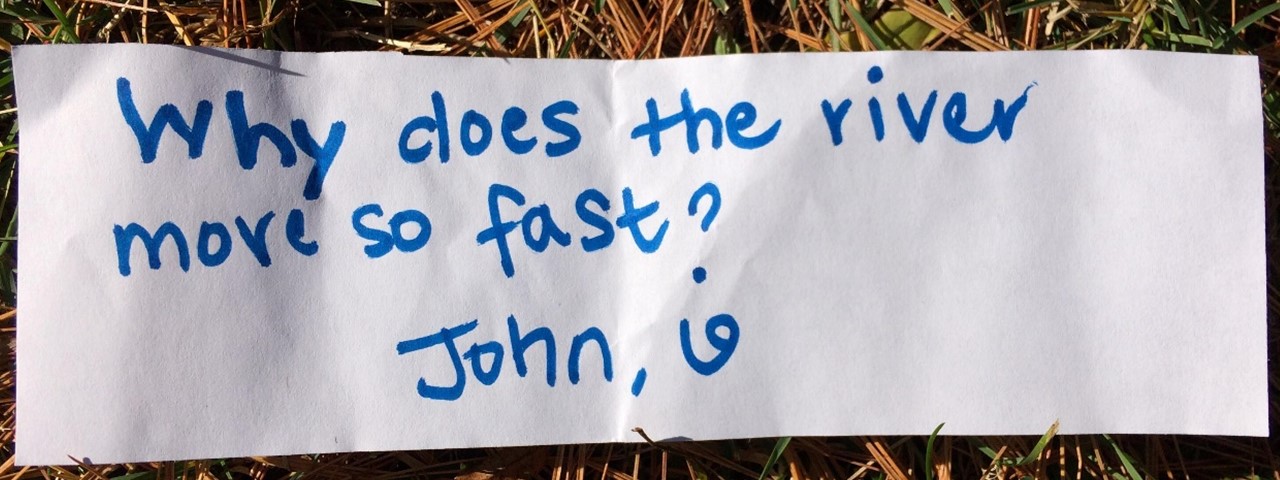
Why does the river move so fast? (John, age 6)
Dear John,
Thanks for the question! The speed of a river is determined by how quickly it drops in elevation. If you’ve ever gone sledding, you know that steeper hills make your sled go faster. Rivers work just like that. The steeper the slope the water travels down, the faster the water will move! We love playing in the rivers around here - there are so many fish!
Have you ever seen a fisher in these woods? Or a mouse that hops? (Heather and Pi)
Hi Heather and Pi,
Funny that you ask, we often see fisher when we visit the North Country. Fisher are pretty common in the woods in this part of the country, but you might not see them often. They like to hide, and keep to themselves - just like us! Fisher are in the mustelid family, which includes weasels, mink, and marten. Despite their name, fisher don’t eat many fish; their favorite prey are porcupines and snowshoe hare.
As for mice that hop... yes we have seen them! There are two types of mice that hop in these woods: meadow jumping mice and woodland jumping mice. Both have strong back legs that allow them to jump 3-4 feet in any direction to escape predators.

Fisher on the Raquette River. Photo: Melissa Burchard, 2017, natureupnorth.org
Jackie and Magoo, age ~40
Are there apple trees in this [Nicandri Nature Center] forest?
Dear Jackie and Magoo,
Thanks for your question. We love apples, and often visit orchards when we pass through the North Country to snack on the sweet apples left on the ground. Did you know porcupines love apples too? There might be a few apple trees here at the Nicandri Nature Center, but we didn’t see them this time. We spent more time snacking on beech nuts and acorns! If you want more information, we would suggest asking the wonderful people who work at the Nature Center. They would definitely know all about the trees here!
How do you get the stuff you need?
Claire, age 8
Hi Claire!
This is a great question. We’re guessing that you’re curious how we meet our basic needs for food and shelter, is that right? We find shelter by resting in fairy homes along our migration route, like the one you visited us in! If there isn’t a home just for us, we visit with our animal friends who live in burrows, like chipmunks, groundhogs - and even snakes! We forage for food, and love to eat seeds, fruits, and roots. Black walnuts are one of our favorite snacks this time of year.
Can you come to our house please? (Emma, Collin, Aidan)
Hi friends,
We would love to visit you in your house, but sadly we’re already headed south for the winter! As much as we love the snow, we need warmth and food to get through the winter. If you build a fairy house for us next year, we might pass through - you never know!
Are white deer just albino or their own species? (Adrianna, age 9)
Dear Adrianna,
We love this question, because we have several albino animal friends! They are special and mysterious, just like us. Albino animals aren’t their own species - they are individuals in a population that lack pigmentation. Pigments are what give animals coloration in their skin, hair, and eyes. For example, if you have brown eyes, that’s because you have a gene that tells your body to make a brown pigment! Some of the local white animals even made appearances on natureupnorth.org (check out our very white white-tailed deer friend here!). This guy isn’t entirely albino, he has a brown head. When animals are missing some pigmentation, but not all, they are called piebald, rather than albino.
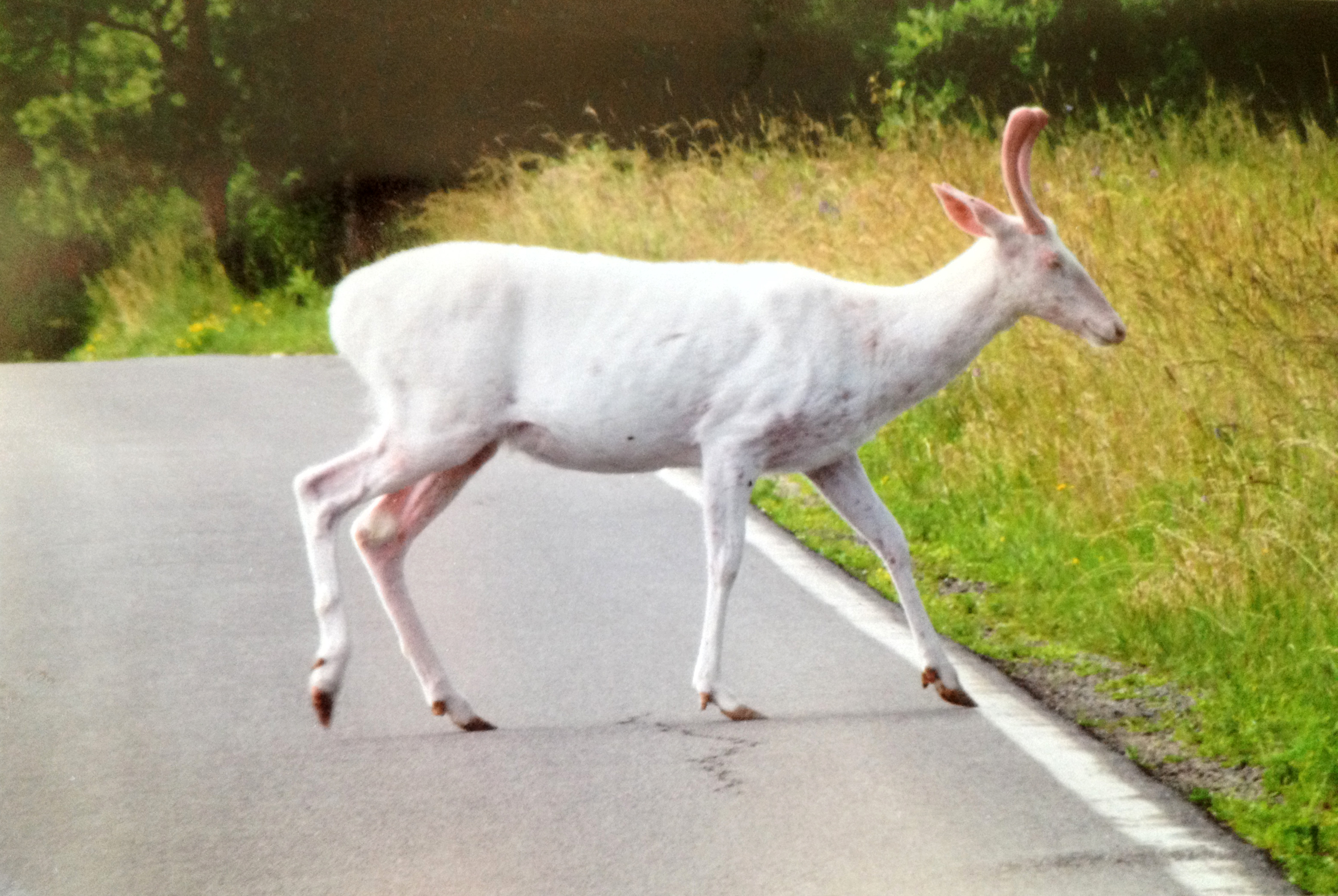
Albino deer. Photo: [submitted by] Jack Holby, 2013, natureupnorth.org
How long does a porcupine live? (Aidan, age 9)
Hi Aidan,
How did you know we love porcupines? They have such lovely quills, and we like to use them to build window frames and decorate our homes! Our oldest porcupine friend in the North Country is 13 years old. We’ve heard they can live from 10 to 15 years in the wild so we’re hoping to visit him a few more times!
Why do some trees change color and lose their leaves faster than others? Does passing water, such as a river, affect it? (Timmy, age 13)
Hi Timmy!
Did you know that one of the reasons why we migrate through the North Country is because of the beautiful fall foliage here? We've often had the same question you asked. Deciduous trees drop their leaves to save energy and resources in the winter when temperatures are lower and there is less sunlight for photosynthesis. Clues like shorter days and colder nights help these trees decide when to let go of their leaves. So, it makes sense that trees in higher elevations and farther north tend to drop their leaves sooner, right? Individual trees within a species that drop their leaves really early (even August!) are most likely stressed. For example, sometimes trees near roads or sidewalks don’t get enough water and drop their leaves early in the fall (for more information on why this happens, visit this article). In the same way, trees near water (like rivers and lakes) might be more likely to hold onto their leaves longer and keep photosynthesizing!
However, some trees, like American beech, keep their leaves for most of the winter! We’ve asked around, and some scientists don’t even know for sure why this happens. Some ideas are that dropping leaves later helps ensure they’re nutrients will go back to the tree’s roots (rather than blowing away!), and that the dry leaves help protect the new emerging bud from winter browsing by hungry animals.
How can you identify a maple tree after its leaves fall off? (Charlie, age 2)
Dear Charlie,
Wow! What a great question! It can be pretty hard to identify trees without their leaves - leaves are so wonderfully characteristic and colorful. But we’ve learned to identify trees without leaves by paying closer attention to their other features. Each species of tree has unique buds, and you can also learn a lot about trees by looking at their bark, crown shape, and branching pattern. Maple trees have opposite branching pattern, meaning their branches and buds emerge directly opposite one another. Our favorite tree, the sugar maple, has pointy brown buds with lots of little scales protecting the new leaf inside. Take a look at this picture to see what we mean.
Sugar maple buds. Photo: natureupnorth.org
How do animals not get in your house? (Anonymous)
Thanks for this interesting question!
Actually, we let animals into our house all the time. Most of our friends are animals that live in the forest, like chipmunks, mice, and even insects and songbirds! We like to visit with them in their homes, and we invite them to ours too. We know most people don’t let wild animals into their house, and we understand why. Most wild animals probably wouldn’t let you into their homes either, even if you could fit!
How do you live in winter? Is your home warm or cold? (Claire, age 8)
Hi Claire,
While we love the winter, we don’t actually live here in the North Country all winter long. We are very small, and we don’t like to hibernate. Instead, we spend the winter season south of here, in woods that are a little warmer and have more to eat! We have many homes in the different places we visit, and some are warm and others are colder. In the winter, we love to have sleepovers with one of our warm-blooded (endothermic) friends - like woodchucks, chipmunks, and mice!
How deep do the roots go? (Will T., age 6)
Hi Will,
Every tree species is unique and has unique roots. However, tree roots are shallower than most people might think! We know from our the friend meadow vole the most tree roots are actually in just the top foot and a half of soil. Our guess is that that’s because all the good nutrients and minerals are in the top layer of the soil… from dead leaves breaking down and stuff. What do you think?
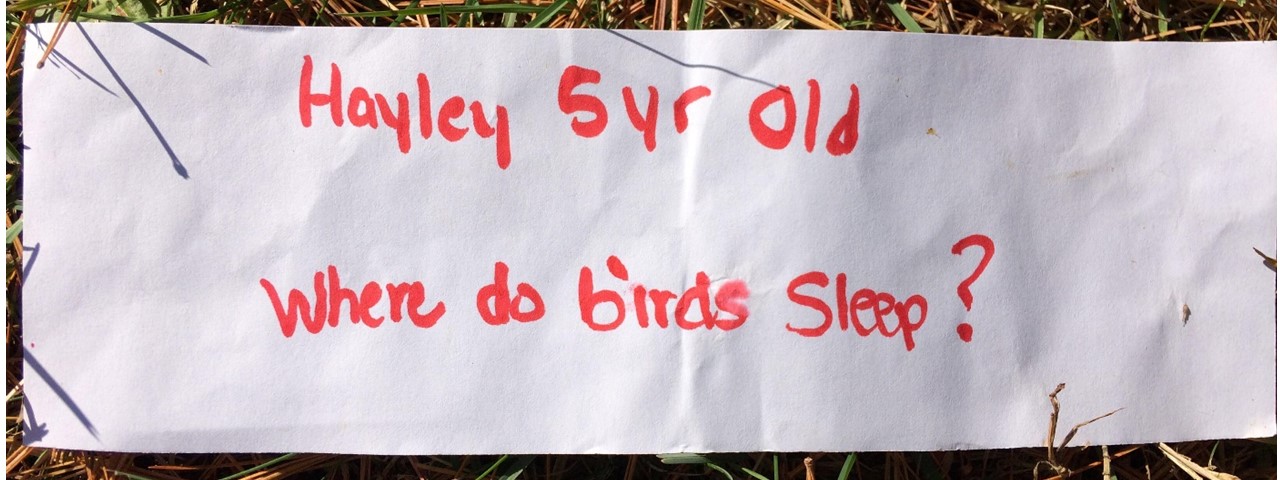
Where do birds sleep? (Hayley, age 5)
Hi Hayley!
Great question. Just like people, every type of bird is different in how they like to sleep. Some birds sleep perched out in the open, in trees or on the ground. Others prefer to sleep in nests, or nooks in trees. For example, many owls sleep in holes created by pileated woodpeckers. How do you like to sleep?
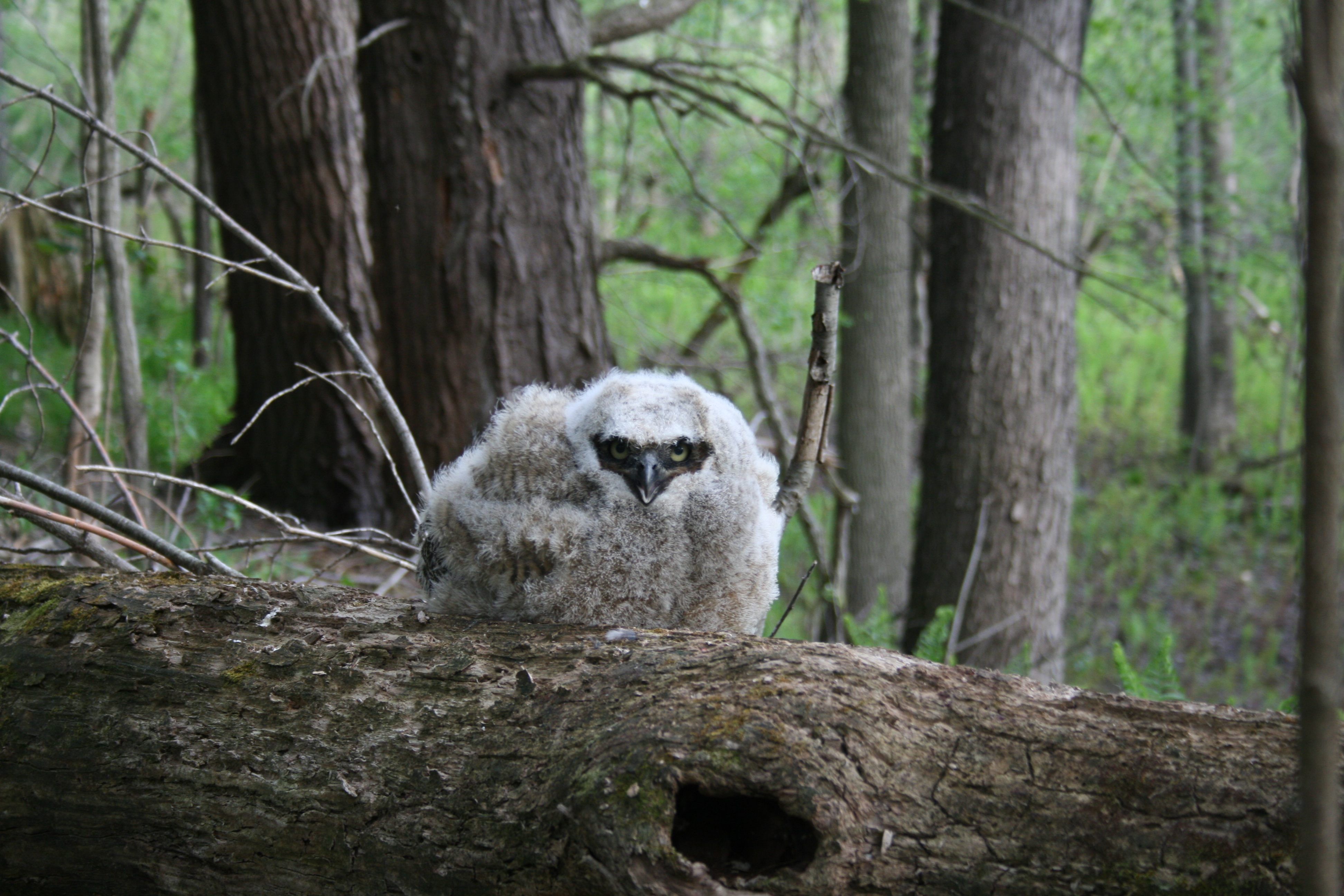
Great horned owlet. Photo: Jake Malcomb, 2014, natureupnorth.org
How much does it rain per year? (Kendall, age 18)
Dear Kendall,
This is a good question! We asked our frog friends because we know rainfall and snowfall (also called precipitation) is really important to them! Wood frogs actually depend on the creation of temporary ponds in the spring, called vernal pools, for reproduction. They say a couple feet of rain each year is pretty average (37.36 inches per year is the average across NYS). Years when there is less rain are really hard for them!
What kinds of tricks do fairies play on Halloween? (Jason, age 36)
Hi Jason,
Fairies love to play tricks - but only friendly ones of course! This year, we had fun playing tricks on our squirrel friends, by hiding their nuts and seeds in new places. Don’t worry, we left clues!
Why do the leaves fall? (Kaitlyn, age 15)
Dear Kaitlyn,
To understand why leaves fall, you just have to understand why animals (and fairies) migrate! Here in the North Country where you live, you know it gets much colder and darker in the winter. With less sunlight and warmth, most plants can’t photosynthesize and grow. Deciduous trees - the ones that drop their leaves each year - save energy by going dormant in the winter. The timing of leaf drop is a little different each year but depends on the number of hours of daylight, as well as precipitation and temperature.
Can you get a new pumpkin? (Mya, age 5)
Hi Mya,
We loved our pumpkin, but not everything can last forever. It’s important that nutrients recycle back into the earth. You must have visited our pumpkin fairy house just before we left and let it compost - it was really starting to rot! Lots of wild animals build homes that they only use once, and start fresh again the next year.
Where were you when we visited? (Mya, age 5)
Dear Mya,
It might not seem like it, but fairies are actually pretty shy around humans. We prefer to stick with wild plants and animals most of the time. But we love visiting and leaving little signs we were there for you to find!
Are there any snakes around your pumpkin house? (Mya, age 5)
Another great question Mya!
We didn’t see any snakes this visit, but we often do. Our favorite snake here in the North Country is the common garter snake, they are so friendly and kind! We love making friends with snakes, and sometimes they even give us rides on their slippery backs. Did you know that snakes spend the winter hibernating in big groups underground? A group of hibernating snakes is known as a hibernaculum.
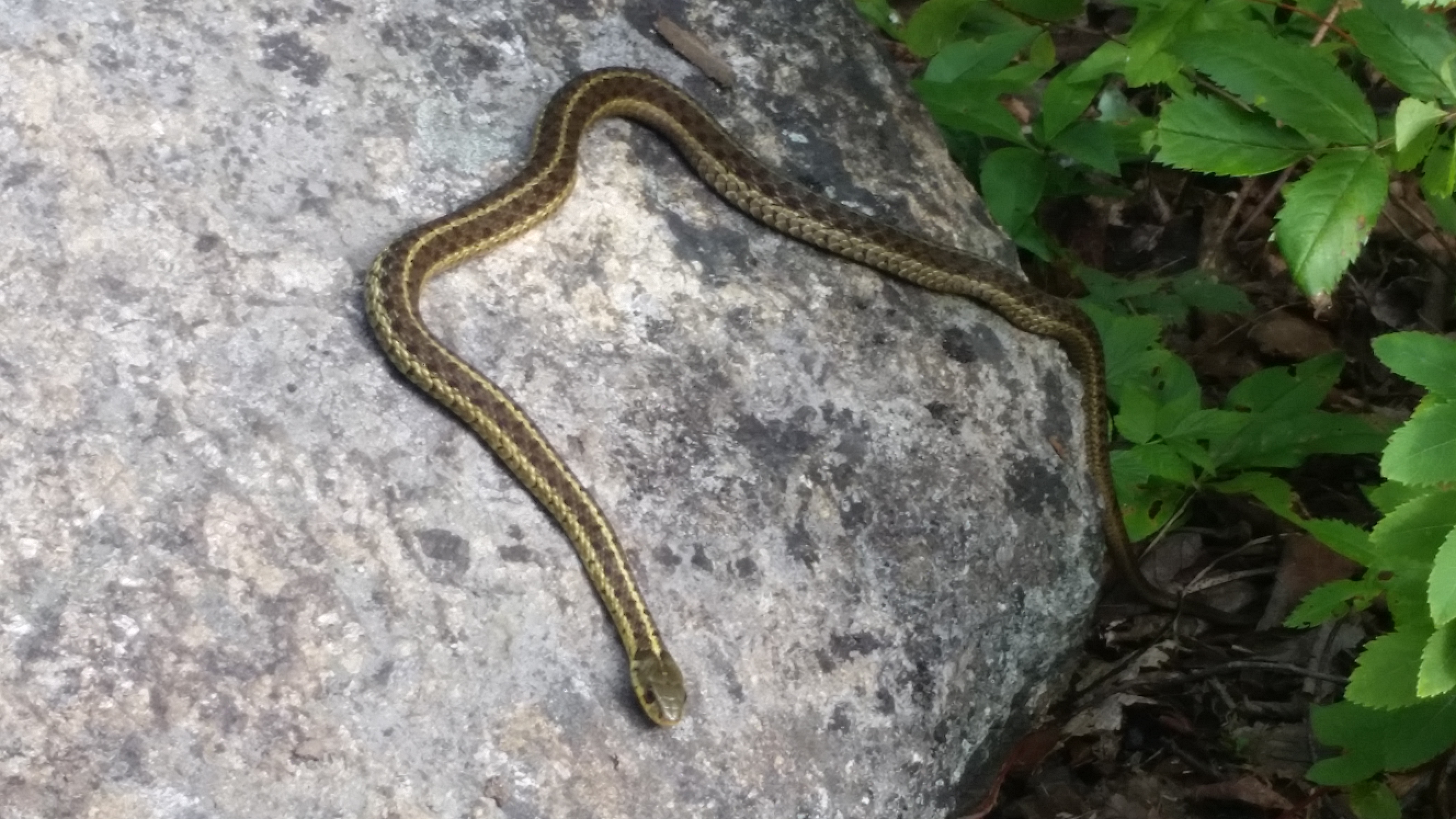
Garter snake. Photo: Leigh Rodriguez, 2016, natureupnorth.org
How do trees grow? (Aaron, age 2)
Hi Aaron!
Thanks for this question. Just like animals, trees and other plants need food, nutrients, and water to grow. They draw water and nutrients from the soil with their roots, and make food from sunlight through a special process called photosynthesis. During photosynthesis, chlorophyll in the tree’s leaves turn sunlight and carbon dioxide into sugars and oxygen. How neat is that? Sometimes, we lay in the sun and pretend we can photosynthesize too. If only!
What animals are here? (Aaron, age 2)
Hmm... where do we start?
There are hundreds of animals that call these woods their home. Lots of mammals that you have probably heard of, such as mice, squirrels, snowshoe hare and foxes. And of course, so many birds! Our favorites are the bluebirds that live in their little nest boxes, the clever ravens, and the shy owls that come out at night to hunt under the moon. And turtles too! We love that they carry their homes around with them everywhere they go. And then we can’t forget insects and spiders and worms and all the other little things, they’re animals too. Some of our closest friends are the little animals no one else notices - because they’re just about our size!
How long do pine trees normally live? (Carlie, age 17)
Hi Carlie,
This is a hard question to answer, because it depends on which type of pine tree you’re asking about. Two of the common native pine trees in the northeastern United States are eastern white pine and red pine, both of which often live up to 200 years. In some parts of New York, there are some eastern white pine that are even older… and scientists say they can live for up to 450 years. We think that’s pretty impressive, but over on the western coast of the country we’ve heard that bristlecone pine can live to be almost 5,000 years old. Wow!
What is the largest animal on Earth? (Sofia, age 7)
Hi Sofia, great question!
The largest living animal on Earth is the blue whale, which can be almost 100 feet long and weigh up to 173 tons. That’s 381,399 pounds, or as much as 14 school buses! Did you know that every summer whales visit the St. Lawrence River?
And thanks for the wonderful artwork, too!
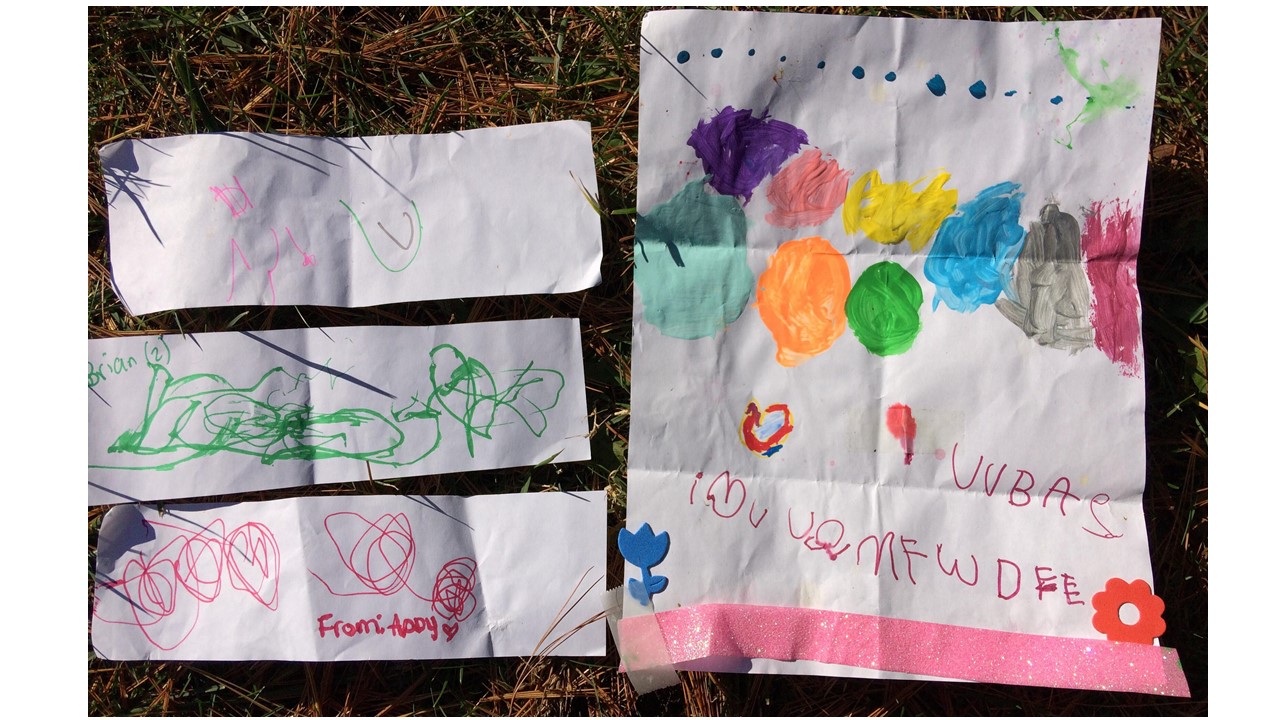
EXPLORE PAST ASK A FAIRY QUESTIONS
Ask A Fairy: Spring 2018
Ask A Fairy: Spring 2017
Ask A Fairy: Fall 2016 (Part 1, Part 2)
ABOUT ASK A FAIRY
Each spring and fall, a merry group of fairies migrates through the North Country. In the fall, they head south for the winter, in the spring, they are northern bound for the summer. These aren't just any fairies – these fairies live in the woods, where they spend their days bonding with birds, talking with trees, buzzing with bugs, and getting friendly with fungi. As you might guess, over time they’ve become expert naturalists. Each season during their visits, you'll have the chance to visit their fairy houses on new North Country trails and ask them any questions you have about nature. Thank you for participating. Please contact info@natureupnorth.org with any questions or feedback. Thank you!

